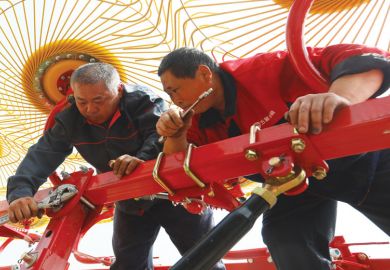Molecular Imaging arose from a discussion among a group of eminent researchers in 1999, after which the Society for Molecular Imaging and eventually the journal were established. The editorial board is largely American (there are only four associate editors from outside the US), and the first issue appeared in 2002. Last year, realising the importance of the subject, the European Journal of Nuclear Medicine added " and Molecular Imaging " to its name; and the J ournal of Clinical Positron Imaging became the Journal of Molecular Imaging and Biology, sponsored by the renamed Academy for Molecular Imaging. Furthermore, there are many related journals such as the Journal of Molecular Biology, and the Journal of Molecular Pharmacology, and also many academic centres for molecular imaging both in the US and in Europe. While molecular imaging might be called a bandwagon, the expansion is clearly the result of the considerable interest in the "postgenomic world" - in studying genome expression using various imaging techniques, in particular isotope labels as in single photon and positron emission tomography (Spect and Pet), luminescent and (NIR) fluorescent probes and by magnetic resonance imaging (MRI), for example using nanoparticles.
What then does "molecular imaging" mean to the various researchers? I am sure that not only is it interpreted differently by different groups, but the term will also evolve with time (rather like "bioinformatics"). A definition given by Gary Luker in the second issue of Molecular Imaging is that "ultimately, a goal of molecular imaging is to detect, localise and quantify in vivo changes in expression of reporter genes". The key words here are: localisation, quantification and in vivo.
Papers reporting work in this field are largely about small animal imaging experiments involving genetic manipulation, frequently with oncological interest. These experiments are fascinating and often very sophisticated, in which subtle changes at a cellular level are tracked by indirect signals to produce information about temporal changes with images for localisation.
Of particular interest is that multiple simultaneous signals can be produced so as to generate, for example, fluorescence together with isotopic images. Hence the development of small animal imaging systems is proceeding rapidly, with fusion of images, combined Pet/MRI imaging (as at King's College London) and small animal computerised tomography systems combined with optical and isotopic imaging. The demand for small animal imaging systems is such that there is considerable delay before installation. Extensions to work directly in human (clinical trials) are in progress.
While my own interest is primarily in imaging, the articles mentioned above, which are of excellent quality, are more suitable for the expert in genetic manipulation and expression. The tools available to us in this "postgenomic" world, such as those described in this journal - as illustrated by the speed in decoding what might be the Sars virus - indicate the extraordinary potential available in such types of clinical research. There have to be numerous journals in this rapidly developing field.
Andrew Todd-Pokropek is professor of medical physics, University College London.
Molecular Imaging
Editor - Ronald G. Blasberg and Ralph Weissleder
ISBN - ISSN 1535 3508; E-ISSN 1536 0121
Publisher - MIT Press
Price - Instits. $320 (e$288); indivs. $132 (e$119) + $25 outside US
Pages - (four times a year)
Register to continue
Why register?
- Registration is free and only takes a moment
- Once registered, you can read 3 articles a month
- Sign up for our newsletter
Subscribe
Or subscribe for unlimited access to:
- Unlimited access to news, views, insights & reviews
- Digital editions
- Digital access to THE’s university and college rankings analysis
Already registered or a current subscriber? Login



